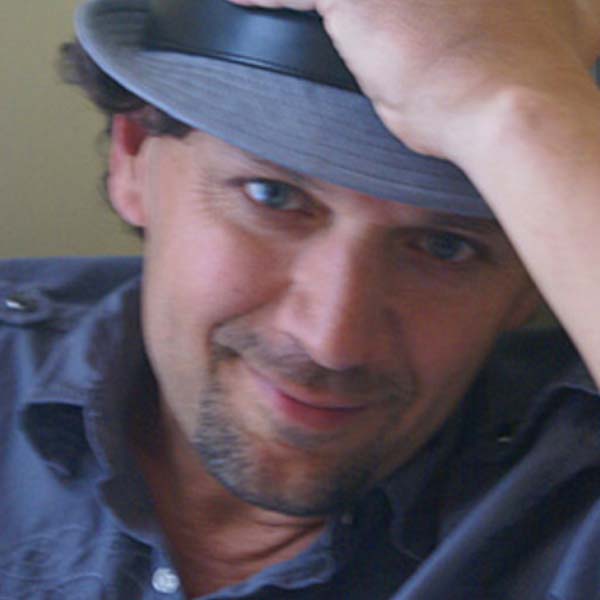by Marty Dodson
Sep 13, 2021

We have many people that come to SongTown wanting to learn how to write a song for the first time. Others have written for a short time and want to learn good techniques and habits. I love to help people who are just starting out. I believe it’s especially important start off on the right foot and not develop any bad habits that you’ll have to unlearn later. So, I’ll walk you through my answer to the question “How do I write a song?”.
Chapters
- Finding A Topic
- Brainstorming Song Titles
- Choosing Your Title
- Blueprinting
- Groove & Melody
- Write The lyric
- Finishing Up
1. For Your First Song, I recommend starting with a topic you are passionate about or that makes you feel something.
For instance, if you are newly in love, you are in a great place to write a love song. If you have recently had your heartbroken, that might be a good emotion to dig into first. In my SongTown workshops, we do an exercise where I ask everyone to write down 3 things they would like to say to someone. This always leads to interesting or heartfelt titles. Finding a topic that is interesting to you and that makes you feel something is always going to fuel your creative juices more than a topic that is purely fiction or non-relatable to you.
2. After you find your topic, brainstorm interesting song titles that would creatively express the feeling you are after.
Let’s pretend you chose heartbreak as the topic. I always suggest that you focus on coming up with titles that are real rather than clever. This will help make your song believable and have a greater chance of emotionally impacting your listeners. You might come up with titles like:
Never Again (I’m never going to love again)
Why (did you hurt me)
There’s Nothing Good In Goodbye
The more titles you think of the better. It’s always best to choose the best one from a group of titles than the first one that comes to mind.
3. The Next Step In How To Write A Song Is Choosing Your Title
Now, let’s say I decide to write the title “Never Again”. Since that is going to be my title, I know that is going to be the big idea in my chorus. The chorus is the most important part of a modern song in almost any genre.
A big reason for choosing your title first is that it gives you a direction to write towards. As my friend Tim Johnson used to say, “It’s easier to get to where you are going, if you know your destination.” Having your title as your destination allows you to write TO it instead of wondering around in search of a direction. Your audience wants to be taken for a journey and not a wild goose chase.
4. Blueprinting
Once I have chosen my title, I use a technique I call “blueprinting” to work out what I’m going to say in my song. The book “Song Building” goes into depth about blueprinting, but I’ll give you the quick version here.
First, you want to come up with a short, concise, sentence that describes what you want to COMMUNICATE in each section of the song. And, you need to keep in mind that the verses have to set up your big chorus idea. Your chorus should be the “I said all that to say this” section of the song.
In fact, I think of each part of my song having a job…
Verse 1 – Gives characters, context and setting so that the listener can follow what’s happening in the song.
Chorus- Introduces your big idea or emotion (Title)
Verse 2 – Takes the big idea or emotion farther
So, I might try a blueprint like this:
Verse 1 – You broke my heart and now you want a second chance
Chorus- Never again will I trust you
Verse 2 – You’ll have to find someone else to hurt
Notice that Verse 1 introduces the characters – the singer and the love who hurt them. It also gives us context. The other person broke the singer’s heart and now is coming back to try and reconcile. In this particular song, the setting wouldn’t matter. They could be anywhere because our song is just about a conversation. In other songs, the whole song revolves around the setting. You might write a song about falling in love on a beach. Then, you’d need to include that setting in your blueprint.
Then, our chorus introduces the big idea, NEVER AGAIN!
That’s a strong statement and a big concept for this person to stand up for themselves and protect their heart.
Next, for verse 2, we need to take that big idea farther. The singer advances the idea by telling the other person to move on and hurt someone else. That advances our story because the singer is not only saying she’ll never trust him again, she lets him know he’ll have to find another victim to hurt in the future.
A common ailment in second verses is just re-writing the first verse in other words. That’s boring to a listener and doesn’t keep the story moving along. We might be tempted to continue talking about how much the other person hurt the singer, but we’ve already said that in the first verse. There’s no need to go back to that idea.
If you learn the jobs of each part of a song and the skill of blueprinting, you’ll have a great foundation for writing lyrics that are clear and easy to follow. And, blueprinting can guarantee that you NEVER get stuck trying to figure out what to say in your second verse. You’ll know before you start writing what you are going to communicate in each section. Once you have a blueprint you are happy with, it’s time to start writing your song.
5. Find A Groove And Melody
If you play an instrument, I recommend that you start playing around with it to find a feel or groove that matches your lyrical content. Since our song is about a breakup, I might try some minor chords. I probably would make this song a ballad or mid-tempo groove. I would make sure that the melody doesn’t sound happy because that wouldn’t match my lyric.
If you don’t play an instrument, you can experiment vocally just singing or humming different melodies. Clay Mills has many great techniques for creating interesting melodies in “Mastering Melody Writing”. But, the easiest way is to just starting experimenting to see what melody and groove fits your lyric direction the best.
One of my mentors used to start singing the title as he tapped out different beats on his leg with his hand. He would do that until he found something that let him sing his title just as naturally as he would speak it. Then, he knew he had found the right groove for his song. He would build the rest of the song around the melody that he loved for his title.

6. After you have a groove and feel you love, start writing that lyric.
The next step in learning how to write a song is to start writing the lyric. I like to start at the beginning of the song, so I look at my blueprint for verse 1:
Verse 1 – You broke my heart and now you want a second chance
I begin thinking about an opening line that communicates that idea in a creative way. My blueprint Is pretty ordinary and simple (as it should be). So, I want to craft something more interesting that still communicates that idea. I might land on something like:
Baby broken hearts don’t give second chances
I like the feel of that. It’s sassy and it say what I’m trying to say in an interesting way. So, I continue crafting that verse.
Baby broken hearts don’t give second chances
So don’t you come crawling back to me
You always took what we had for granted
But you lost it when your goodbye set me free
I’m pretty happy with that verse, so I move on to the chorus. I want to make a big deal of my title, so I might try something like:
Never again
Will you taste this kiss
Never again
Will your name roll off my lips
Do I love you
Will I trust you
Never again
I was tempted to use the word “Hurt” in my chorus, but my blueprint helped me remember that it was going to be an important word in verse two. Notice that I’m making sure each piece of my song really sticks to it’s blueprint idea and that I’m not overlapping ideas is mixing ideas from different sections.
Learning to let each section of your song communicate one strong idea is the key to having songs that listeners can easily follow and connect with.
If you’ve ever heard a song that just wandered all over the place, you can be sure the writer didn’t have a clear idea about what they wanted to say from the beginning. The same is true if you’ve heard a song that left you scratching your head and thinking “What in the world does that mean?” Clear communication doesn’t happen by accident and planning out what you want to say in every section BEFORE you start writing is a great way to make sure your communication is clear and purposeful.
7. Continue with this process and craft the rest of the lyric and the melody.
After I finish my second verse, I ask myself if there is anything I could say in a bridge to make the song even better and take the big idea even farther. My first publisher used to say “Don’t build a bridge unless there’s a river to cross.” If I can find something that advances the story, then I write a bridge. If not, I usually do some sort of instrumental solo and then come back to a chorus or two.
I hope this helps you lay a good writing foundation for your first song! 7 Books Every Songwriter Should Read is a great list of books for diving deeper.
Remember, be patient. Learning how to write a song and doing it well takes time. May this be the first of many songs for you!
Write on!
MD
share
Write Better Songs Faster
Songwriting Success is Clay & Marty's 10-day video series that will help you level-up your songs and finish them faster. Enter your email address to get started!



